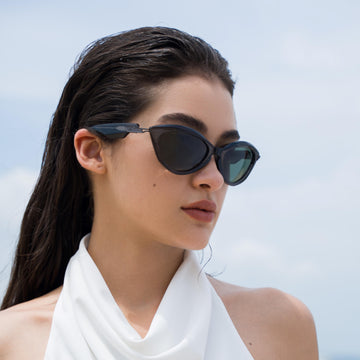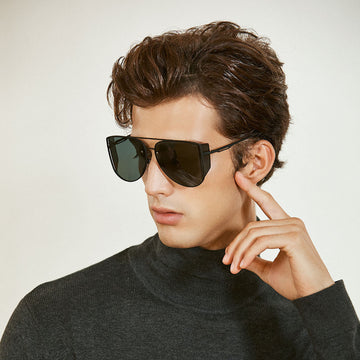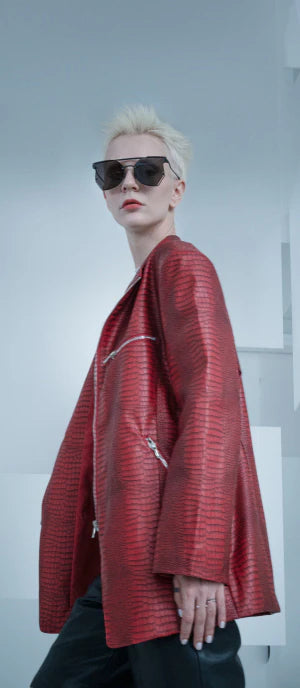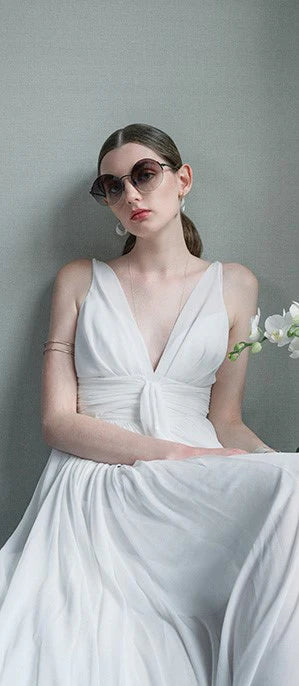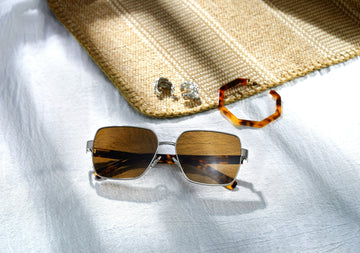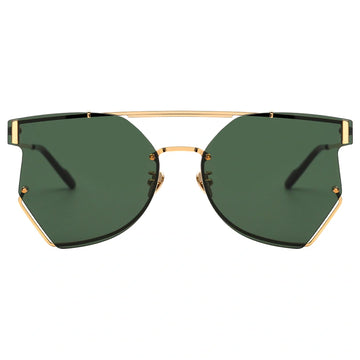Sometimes, do you feel it's tough to keep up with the slang and language kids use today. Gen Alpha's values and spending habits have shifted dramatically with the times, shaped by digital culture and evolving trends.
In the evolving landscape of fashion, accessories—especially sunglasses—are no longer mere functional items to shield our eyes from the sun. They have become potent symbols of identity, self-expression, and generational mindset. As brands look to connect with younger consumers, understanding how Generation Z and Generation Alpha differ in their aesthetic and technological expectations is crucial. In this article, I'll dive into what the latest research reveals about their eyewear preferences—and why those differences signal deeper shifts in consumer culture.
Who Are Gen Z and Gen Alpha?
Before we dig into sunglasses, a quick refresher on the difference of two generations:
Generation Z (born roughly 1997–2012) grew up alongside the rise of social media, smartphones, and image-centric platforms like Instagram and TikTok. They are digital natives who value authenticity, self-branding, and cultural engagement.
Generation Alpha (born from 2013 onward) is the first generation to never remember a world before AI, smart devices, and gamified digital experiences. Technology isn't just a tool for them—it's immersive, seamless, and ever present.
While these generations share a digital foundation, their sensibilities—especially when it comes to style, messaging, and how they relate to brands—are diverging in fascinating ways.
Sunglasses as a Lens into Generational Identity
Sunglasses, because they lie at the intersection of utility and aesthetics, become a telling case study: How do different generations overlay visual identity, technological expectations, and expressive flair onto such an everyday accessory? The Perfect Corp specifically explores how Gen Z and Gen Alpha diverge in their eyewear tastes—on frame shape, size, color, materials, lenses, and symbolic meaning.
Simultaneously, the GWI analysis paints a broader backdrop of each generation's values, media habits, and expectations from brands. Bringing these together gives us a richer, more actionable narrative.
Frame Shapes & Silhouettes: Confidence vs. Whimsy
One of the starkest differences lies in how each generation conceives "cool" in frame shape:
Gen Z is drawn to bold, statement-making silhouettes. Oversized squares or rectangles channel a confident, fashion-forward aura. They also embrace slim Y2K-style ovals as a nod to early-2000s revival culture.
Shop y2k sunglasses - Ares
Gen Alpha, by contrast, gravitates toward playful, softer forms. Think rounded frames, simple geometric shapes (circles, hearts, stars)—designs that feel friendly, imaginative, and unforced.
Shop light tinted sunglasses - Eosephoros
Why this divergence? Gen Z is already entrenched in social media culture—they want frames that carry visual momentum, that register at a glance, that help build a "look" on camera. Gen Alpha, meanwhile, is still experimenting with style. Their choices often favor comfort, permanence in wearability, and a sense of delight rather than boldness.
In design terms, if Gen Z opts for fashion statements, Gen Alpha treats sunglasses as an entry point to play and creative self‐exploration.
Scale & Size: Boldness vs. Manageability
For Gen Z, "bigger is better." Large, dramatic frames that cover more of the face are seen as premium, expressive, and bold. A large sunglass piece becomes an anchor accessory, not just an afterthought.
Shop Bold Big Frames - Vai Crete Oval Sunglasses
Gen Alpha leans smaller and more proportionate. Their frames are compact, lightweight, and intentionally scaled down—more playful than overpowering.
Shop slim cat eye sunglasses - LMP
Imagine a Gen Z consumer drawn to chunky, oversized shield lenses or wraparound rectangular frames. Meanwhile, a tween in Gen Alpha might prefer a petite, haloed circle frame with a pop of color. The difference lies not just in size but in intent—assertion vs. approachability.
Shop wraparound sunglasses for Gen Z - T4 Industry
Shop wraparound cat-eye sunglasses - Hinthial
Color & Palette: Monochrome Mood vs. Bright Experimentation
Gen Z predominantly chooses dark tones, neutrals, metallics, and earthy palette accents. Their sunglasses are designed to integrate seamlessly into a broader, curated look.
Shop Translucent sunglasses - Eosephoros
Shop Translucent sunglasses - Artemis
Shop Translucent sunglasses - Mavra Volia
Gen Alpha embraces color, transparency, and play. Iridescent frames, vivid pops, translucent hues—all are in the mix. Their sunglasses are joyful expressions in themselves.
Shop Blue Sunglasses - Vai Crete
These palette preferences reflect deeper values. For Gen Z, muted tones underscore sophistication and a certain maturity of taste. For Gen Alpha, color signals imagination before brand loyalty—they are less likely to be tethered to brand identity and more eager to experiment visually.
Lenses & Finishes: Personality Amplification
Gen Z revels in gradient tints, mirrored finishes, and subtle color overlays. The lens becomes a statement layer—whether amber undertones, cool blues, or progressive tint transitions.
Gen Alpha isn't shy about boldness. They love bright lenses— pinks, greens, yellows—and lenses that pop visually in a way that matches their colorful frames.
Shop pink tinted sunglasses - TANNING
In effect, for Gen Z, lenses act as accentuation; for Gen Alpha, they're part of the main act. When designing for both, offering interchangeable lenses or modular frames may appeal as a middle path.
Frame Shape
Gen Z prefers bold, statement silhouettes —oversized squares and rectangles that make a strong visual impact. Also embraces slim Y2K ovals, as part of the revival of early-2000s aesthetics.
Shop black slim sunglasses - Eosephoros
Gen Alpha leans toward rounded, soft-edge frames that feel friendly and less aggressive. Experiment with fun geometric shapes (e.g. hearts, stars) to express individuality in a playful way.
Shop rimless sunglasses - Ares
Lens Styles & Treatments
Gen Z loves gradient tints, mirrored finishes, and subtle color overlays. The lens is an aesthetic layer, not just functional. Warm or cool undertones (amber, blue) or dual-tone gradient effects often appeal.
Gen Alpha prefers brightly tinted lenses (blues, greens, yellows) that match the energetic, colorful frames. Lens color is often bold and integral to the overall look.
Shop double gradient sunglasses - EPOCH
Conclusion
At first glance, talking about sunglasses may feel superficial. But in reality, these accessory choices expose deep cultural currents: how identity is formed, how generations engage with visual language, and how brands can bridge across age segments.
By listening closely to what Gen Z demands—boldness, craftsmanship, authenticity—and what Gen Alpha intuitively expects—playfulness, seamless tech integration, imaginative color—you can design not just sunglasses, but future touchpoints of generational trust.

